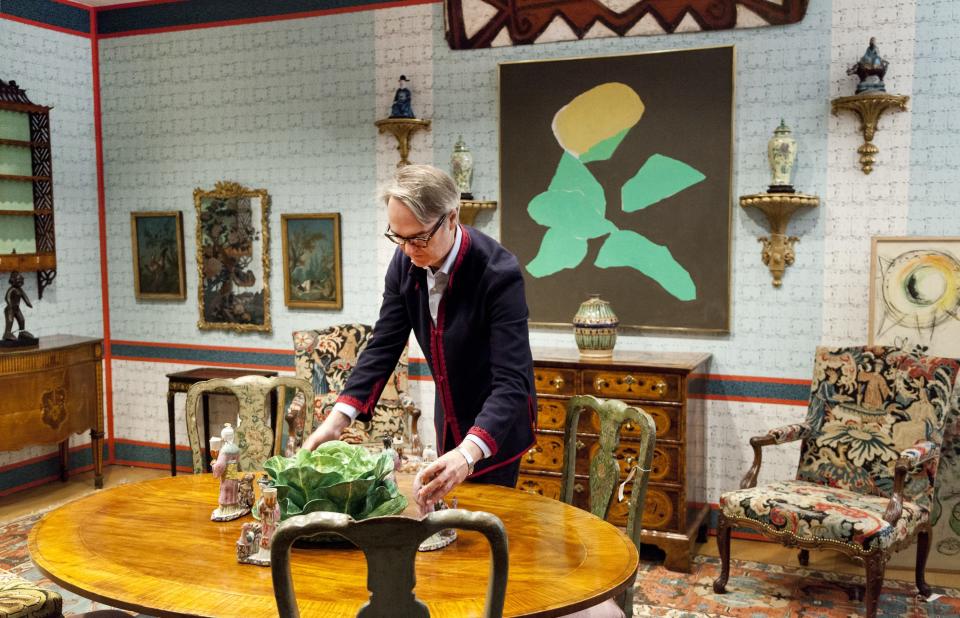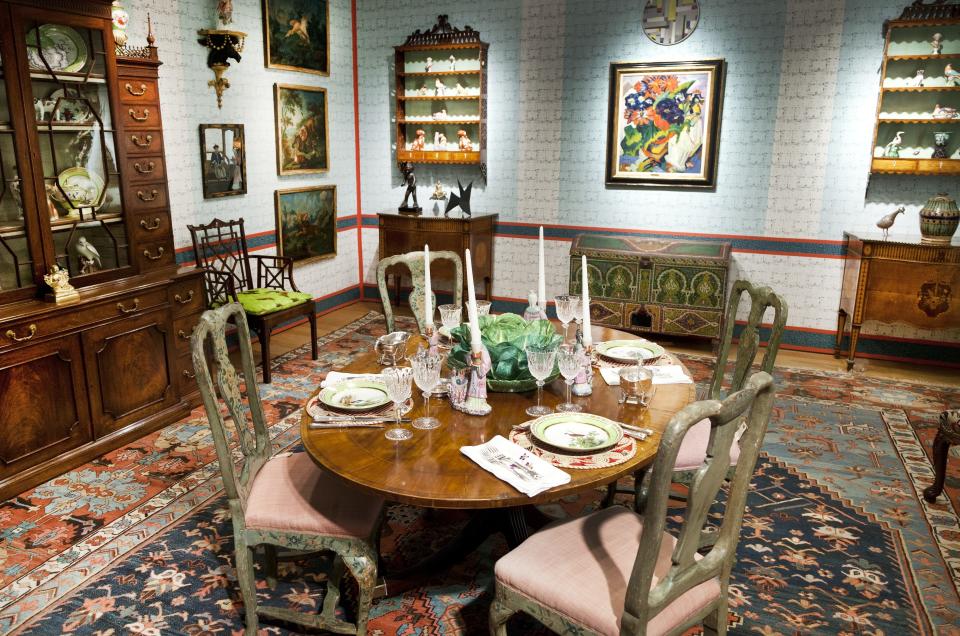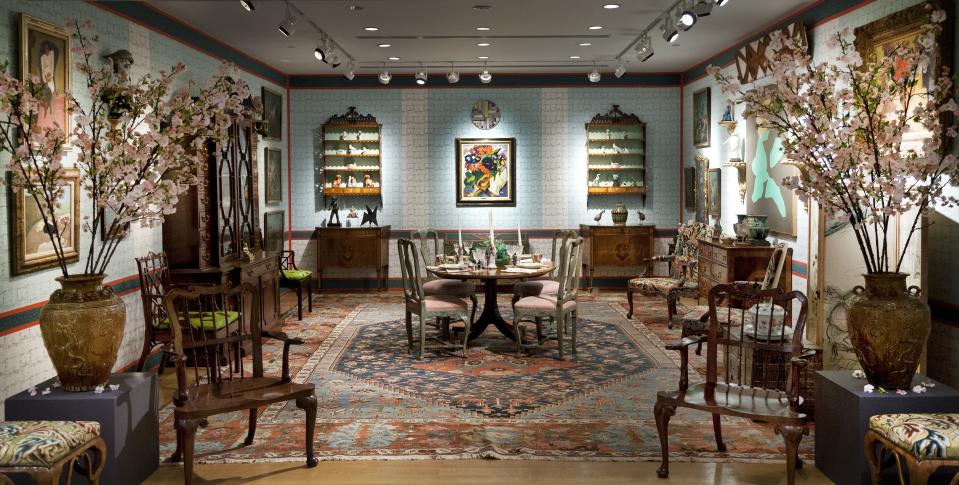Frank de Biasi Devises a Salon for Christie's Auction of Peggy and David Rockefeller Collection
Peggy and David Rockefeller lived large: multiple residences, endless rooms, Chinese antiquities, and 20th-century art galore. The late Standard Oil heirs, devoted spouses, and passionate philanthropists also decorated with masses of antiques, the kind that is inevitably and dispiritingly described as “brown furniture” these days, no matter the rarity, the master maker, or the fineness of the materials. Cue Frank de Biasi.
"When furniture like this is being denigrated and underappreciated, you have to do something to create a space that will appeal to younger collectors, to show that you can use brown furniture in a contemporary setting,” the AD100 interior decorator said on Wednesday at Christie’s in New York City, arrayed in an enviably smart midnight-blue wool jacket trimmed with red embroidery that he recently had custom-made in Morocco (he has a second home there) and blue-and-green-plaid trousers.

Christie’s, which is conducting the Rockefellers’ estate sale in May, is of simpatico mind. Thus, the auction house asked de Biasi to deploy some of the Rockefeller treasures in a special exhibition that will highlight the forthcoming sale. The space that he conjured up opens for public viewing March 16 at 10 a.m. at Christie’s in Rockefeller Center—the stupendous midtown complex of Art Deco architecture that John D. Rockefeller, Jr., David’s father, spearheaded in the early 1930s—and closes on March 23.
De Biasi, with a soupçon of aesthetic input from his spouse, Gene Meyer, the fashion star turned designer of vibrant textiles, carpets, and wallpapers, took a deep, discerning dive into seemingly endless Rockefeller chattel. He surfaced with an eclectic haul of sure-fire delectables, ranging from an exquisite William & Mary oyster-veneer chest of drawers (“You don’t see them this fine very often,” he says) to Kenzo Okada’s abstract painting Night Sunflowers, and had them transported to the Christie’s lobby gallery.

"The gallery is a challenging space, because it has no central focus—no windows, no fireplace, nothing," de Biasi observes. "And a low ceiling and track lighting." Basically, he was describing what could be a studio apartment almost anywhere. Since the lobby gallery has zip architectural charm, he patchworked its three walls with funky Holland & Sherry wallcoverings that were designed by Meyer and his brother, Doug, including two colorways of a dense pattern of scribbles and another paper that is pure disco—spotted, silvery, and reflective.
“It’s busy but reads as a busy neutral,” de Biasi says of wallcovering mashup, executed in a palette of blue, black, white, and green, with red trimmings. (Rather like his new Moroccan jacket, in a way.) Once he decided on the patterns, he proceeded to slice and dice, assembling them into architectural simulacra. Now there’s a cornice as well as pilasters and wainscot—a traditional vocabulary that’s writ groovy and two-dimensional.

Against this trippy background de Biasi has created a dining room, the kind of space whose inherently convivial character has been echoed and amplified with a vivacious assemblage of furniture and objects. A gutsy Sepik River house board from Papua New Guinea surmounts the bold Okada painting, while a Paul Gauguin flower painting is positioned with a folding screen by Henri Chagall. Flowers are everywhere: woven into the tapestry that covers a pair of George II Gainsborough chairs, painted onto the Italian dining chairs, and loomed into a Bakshaish carpet that just about obscures the gallery’s bland, blonde floor. Here and there are Chinese mirror paintings and three genre canvases depicting marauding lions and a large, obviously testy bird. De Biasi hung the trio in stacked formation, unconventionally, from near the ceiling to knee level.
The effect? Spirited, sassy, erudite, catholic (that’s with a small C), and just plain delightful. Frankly—pun absolutely intended—thanks to de Biasi, brown furniture never looked good.


